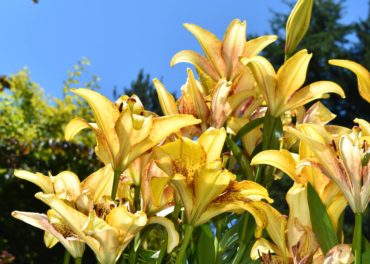
Dip a toe into the world of herbalism, and a whole new world will open up. Just like Alice falling through the rabbit hole and discovering an unexpected Wonderland, the quest to learn about the powerful properties of plants can open such a portal.
Although a magazine article can only scratch the surface, perhaps a spark will light a new interest and awareness of the plant world. The information below is intended solely to open your eyes to the potential hazards and not as a guide to using any medicinal plants. Use it as a springboard for further reading and learning.
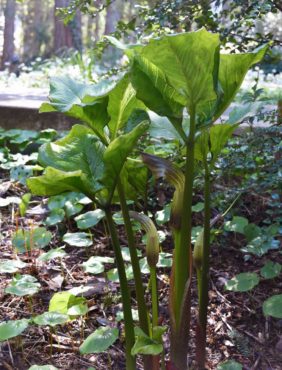
Gardeners would be wise to know as much as possible about the plants that surround their homes, so that they can decide which ones to include in landscapes. You can use that knowledge to teach your children about the dangers of ingesting a plant that has not been approved by an informed adult. You can monitor pets to see whether they are likely to chew on plant material, so you know whether you need to exclude any from their environment. Armed with knowledge, you can choose which plants to enjoy in your garden.
Kids growing up in Europe learned of some of the toxic and medicinal properties of plants by collecting foxglove plants and horse-chestnut nuts and selling them to the pharmaceutical industry. They knew lily of the valley was toxic, but were allowed to pick fragrant bouquets to bring a breath of spring into the home. They could gather mushrooms in the forest, but knew to let an adult inspect every mushroom they brought home for dinner, or risk having the whole meal thrown out. Children can be taught to respect the power of plants and fungi from an early age, and learn to identify them.
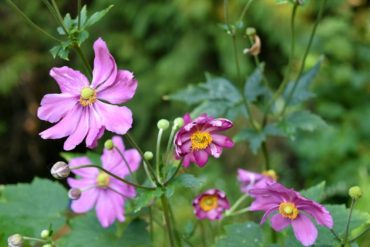
The number of plants that contain active ingredients useful in treating various conditions seems endless, and much is still unknown. Many pharmaceuticals are derived from plants, but their doses and composition are tightly controlled.
Irritant purgatives that cause a violent reaction and are toxic include:
- Ricinus communis (castor bean)
- Podophyllum spp. (mayapple)
- Bryonia dioica (English mandrake)
Powerful, toxic anti-spasmodics and sedatives that contain atropine and hyoscine:
- Atropa belladonna (deadly nightshade)
- Hyoscyamus niger (henbane)
- Datura stramonium (thorn apple)
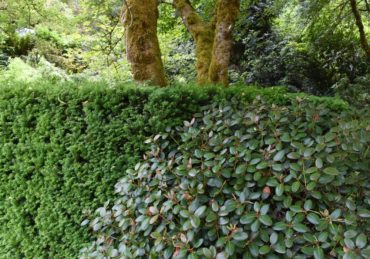
Central nervous system depressants:
- Gelsemium sempervirens (yellow jasmine)
- Papaver somniferum (opium poppy)
Toxic anti-emetics, plants that inhibit the vomiting center of the brain:
- Solanaceae
Toxic plants that affect the heart and circulation:
- Digitalis spp. (foxglove)
- Gratiola officinalis (hedge hyssop)
- Ranunculaceae (ex: buttercup)
- Liliaceae (Convallaria majalis, lily of the valley)
- Helleborus niger (Christmas rose)
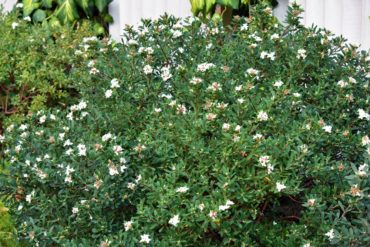
Below are some of the more common plants in this region’s gardens:
- Aconitum napellus (monkshood): A beautiful perennial with blue flowers that look similar to a delphinium. Unlike delphinium, this plant is avoided by slugs. The toxic alkaloid was used by the Chinese for their arrows. The Greek root of the name, akontion, means dart. All parts are very poisonous. Delphinium spp. is also toxic.
- Actaea pachypoda (doll’s eyes): A garden curiosity and attractive to children; all parts, but especially the berries, are toxic.
- Aesculus hippocastanum (horse chestnut): A stately, deciduous tree with gorgeous spring flowers followed by shiny chestnut-colored nuts hidden by a spiky shell that no kid can resist playing with. Growing up, some people created many creatures with these nuts and tooth picks, but no harm was done as they knew not to eat the nuts. All parts are toxic.
-
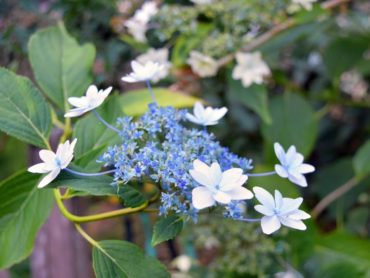
Hydrangea Anemone spp. (several species, like pasqueflower, windflower, Japanese anemone): Lovely garden and wild flowers, but not to be taken internally. The whole plant is toxic.
- Aquilegia spp. (columbine): Who would suspect the innocent-looking columbine’s seeds could be fatal to children? All parts are toxic, but especially the seeds and roots.
- Arisaema spp. (jack in the pulpit, cobra lily): Oxalates in the sap can irritate skin and burn the mouth if ingested.
- Arum maculatum (lords and ladies): A plant that has become a weed in this region, arum has colorful seeds that may be attractive to children. The sap is a skin and mucosa irritant, and all parts of the fresh plant are toxic.
- Buxus sempervirens (English box): The innocent-looking boxwood can be fatal to animals that ingest it.
-
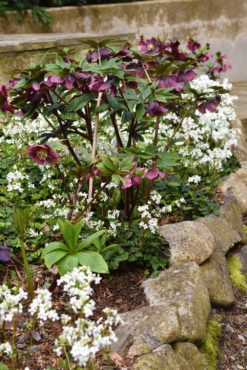
Hellebore Colchicum autumnale (fall crocus): All parts are highly poisonous. No, this is not the crocus (crocus sativus) whose pollen is used as saffron.
- Convallaria majalis (lily of the valley): The divine-smelling, unimposing lily of the valley acts similarly to foxglove on the heart and is used in pharmaceuticals.
- Daphne spp. (daphne): These fragrant shrubs that often bloom when other plants are taking it easy are very popular in local gardens. All parts are toxic.
- Dicentra spp. (bleeding heart): All parts of this pretty native and garden plant are poisonous when ingested.
- Digitalis spp. (foxglove): The stately, beautiful flower that has naturalized in this area acts on the heart if ingested.
- Euphorbia spp. (spurges): The latex sap is a strong irritant to the eyes, skin and mucous membranes.
- Euonymous europaeus, Euonymous sp. (spindle tree): Although this plant has been used to treat external parasites, it is toxic when consumed. The colorful berries may be attractive to children.
- Gallanthus nivalis (snowdrop): The bulb contains most of the harmful alkaloids.
- Helleborus spp. (Christmas rose, Lenten rose, etc): Many of these lovely plants flower when gardeners are most appreciative of the signs of spring. Toxic when ingested, they also cause skin irritation.
-
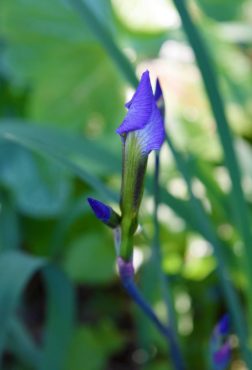
Iris Hydrangea spp. (hydrangea): All parts contain cyanogenic glycosides.
- Ilex aquifolium (English holly): The lovely red berries may look good in wreaths, but should not be ingested.
- Juniperus sabina (savin juniper): All parts of this juniper are toxic, which is useful knowledge for those seeking juniper berries for recipes. For edible berries, look for Juniperus communis.
- Iris sp. (iris): The tubers/rhizomes of irises are poisonous.
- Laburnum (golden chain tree): The seeds are the most toxic part of this golden spring bloomer, but all parts are toxic.
- Ligustrum spp. (privet): The pollen aggravates respiratory issues, and the foliage and berries are toxic when ingested.
- Lilium spp. (lilies): Especially toxic to cats, even in small amounts.
- Melianthus major (honeybush): Dramatic foliage, lovely flowers, a tender perennial in local gardens but all parts are toxic.
- Narcissus spp. (daffodils): The toxins in these plants usually keep them protected from deer, squirrels and voles.
- Nerium oleander (oleander): This evergreen shrub is not often grown outdoors in this zone, but it is a zone 8 plant and may become more common in the Pacific Northwest. All parts are highly toxic.
- Paeonia spp. (peony): The flower petals are the most poisonous part of the plant.
-
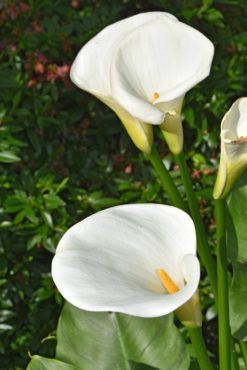
Calla lily Phytolacea spp. (pokeweed): The purple berries look attractive, but are toxic and dangerous. The plant should be handled with gloves. All parts are poisonous and are being studied for their effectiveness in controlling African snails.
- Pieris japonica (pieris): A very popular, deer-resistant shrub. All parts are toxic.
- Podohpyllum spp. (mayapple): Although the ripe fruit is sometimes consumed despite its laxative properties, the rest of the plant is poisonous.
- Prunus laurocerasus (English laurel): A very common hedge plant, it is very poisonous due to its cyanide derivatives.
- Rheum rhabarbarum (rhubarb): The concentration of oxalic acid and other chemicals in the leaves of rhubarb is too high. Only the stalks are used in cooking.
- Rhododendron sp. (rhododendron and azalea): The whole plant is poisonous. The toxins can be concentrated in honey through the nectar.
- Sambucus ebulus (dwarf elder): The elder family contains shrubs that are known for their fruit valued in the making of jams, wines and cough syrups, but not all species are safe for use. The dwarf elder’s fruit is useful as a blue dye, but when ingested, it can be a powerful purgative. The fruits of the red elder can also cause irritation. Sambucus nigra, the black elder, is the plant whose fruit and flowers have a long history of use in the kitchen. The fruit needs to be cooked to be safe.
- Scilla spp. (bluebells, squills): All parts of these spring bulbs are very poisonous when ingested. The plants can also cause dermatitis.
- Taxus spp. (yew): The foliage and seeds are very toxic.
- Veratrum spp. (false hellebore): One of our stunning mountain natives. The whole plant, and especially the rhizome, are poisonous.
- Wisteria chinensis (wisteria): The beanlike seeds and their pods are quite toxic, and can be attractive to children.
- Zantedeschia sp. (calla lily): Consuming any part of the calla lily will result in gastric distress and burning of the mouth.
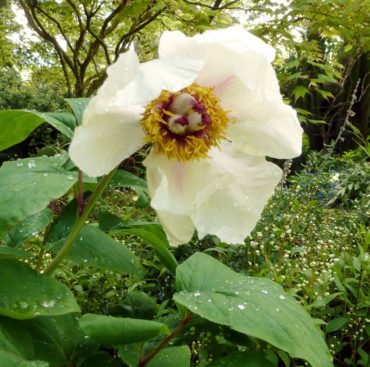
Toxic seeds:
The seeds of several fruits also contain toxic compounds: cherries, plums, apricots, apples, raw almonds. Although the inner seeds of apricots taste like almonds, eating them is not wise.
Toxic conservatory/houseplants:
- Adenium obesum (desert rose): The sap collected from its stems and roots has been used to hunt large game and fish in Africa.
- Amaryllis: The bulb and seed are toxic.
- Brugmansia spp. (angel’s trumpet): These gorgeous plants, with fragrant, pendulous, bell-shaped flowers, charm everyone. Locally, they usually spend summers outdoors but have to be overwintered indoors. All parts, but especially the flowers and seeds, contain the very toxic alkaloids scopolamine and atropine. These plants are related to Datura (devil’s trumpets) and the extremely poisonous Atropea belladonna (deadly nightshade).
- Clivia miniata (Kaffir lily): The roots contain low concentration of toxins.
- Dieffenbachia (dumbcane): Can cause throat irritation and swelling of the tongue, and impede breathing.
This list of is just a small sample of this group of plants. There’s little known about the uses and dangers of many of them.






























